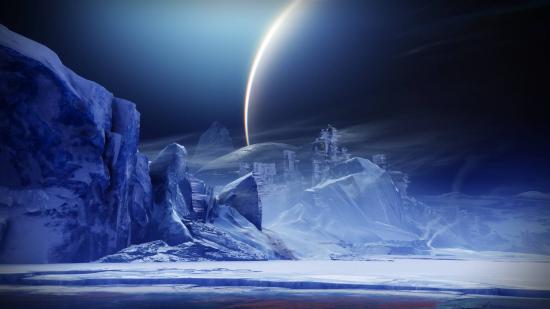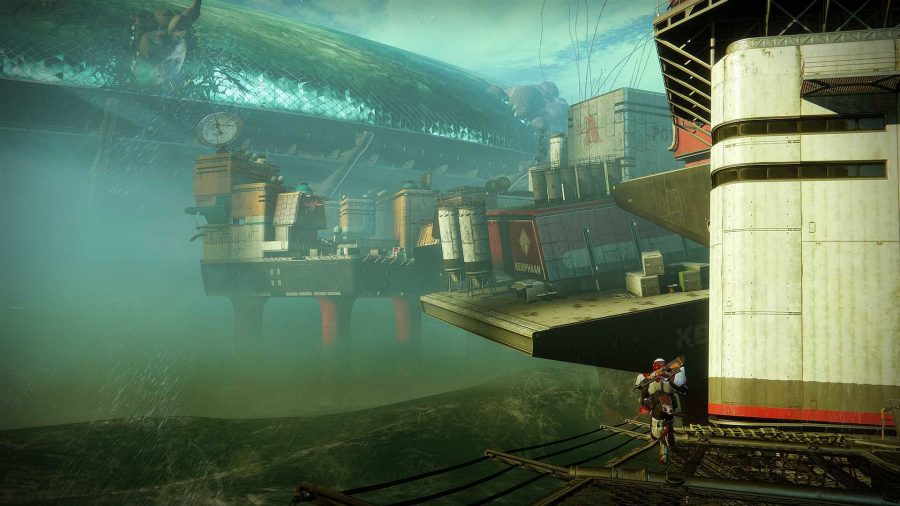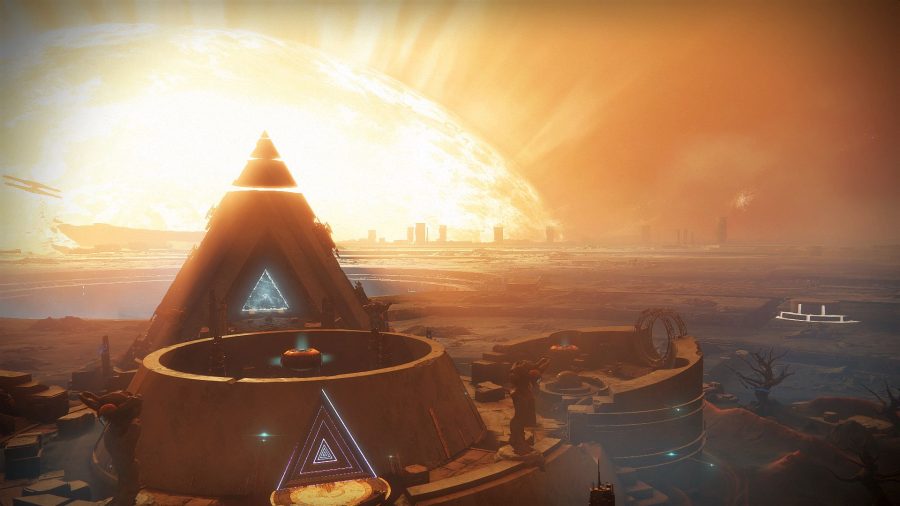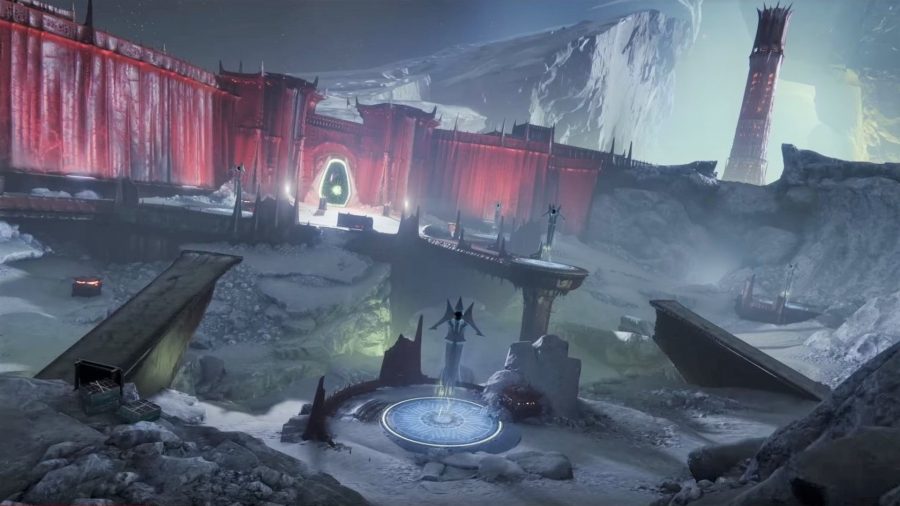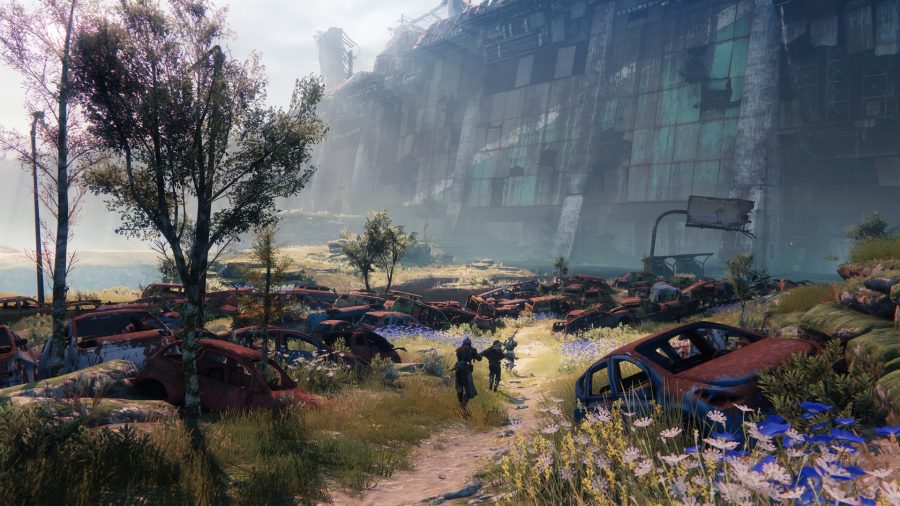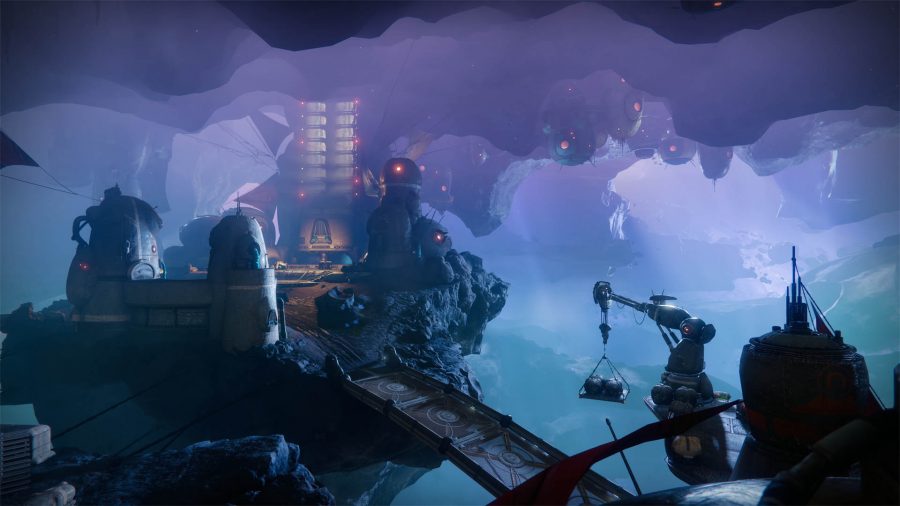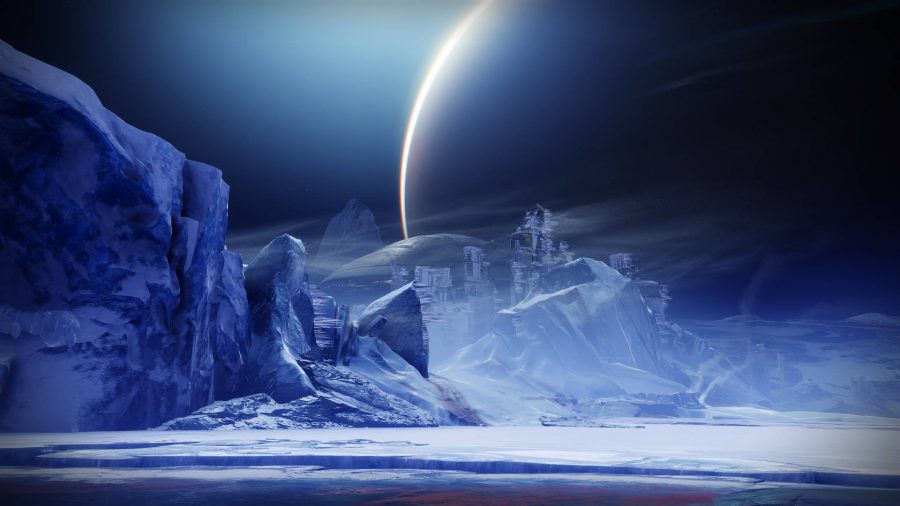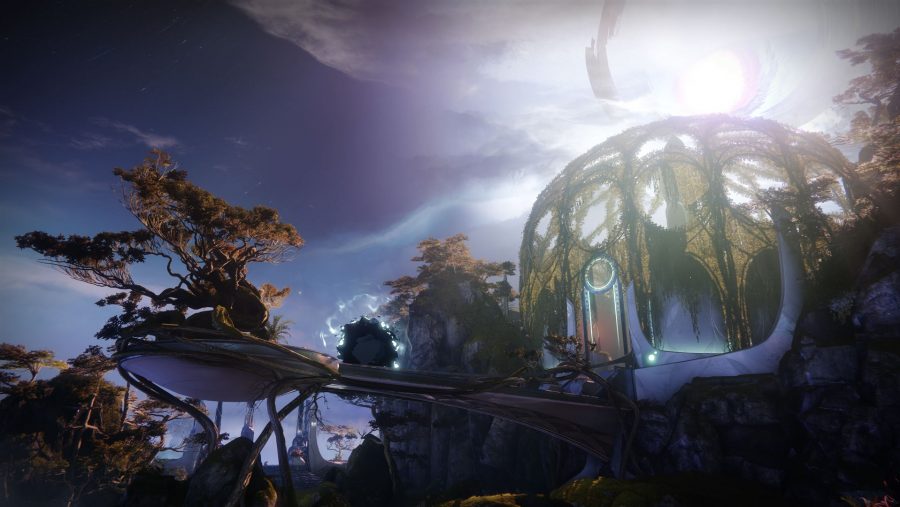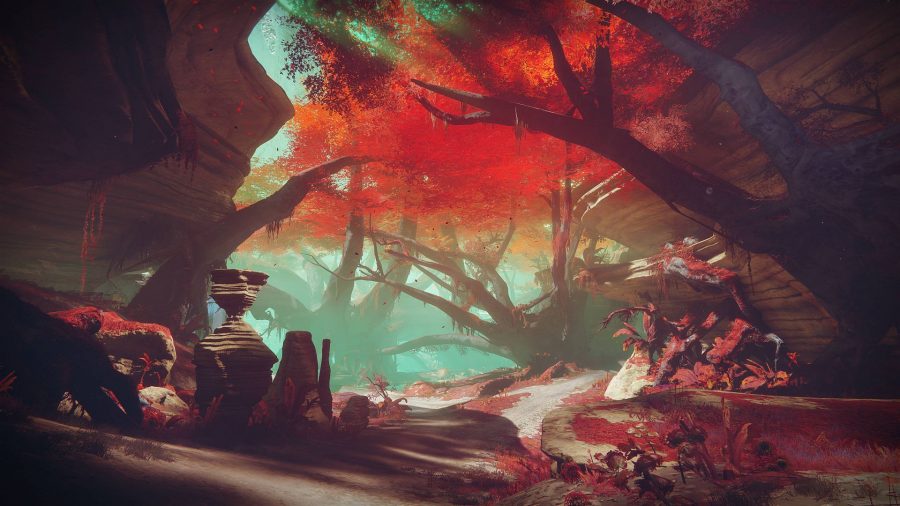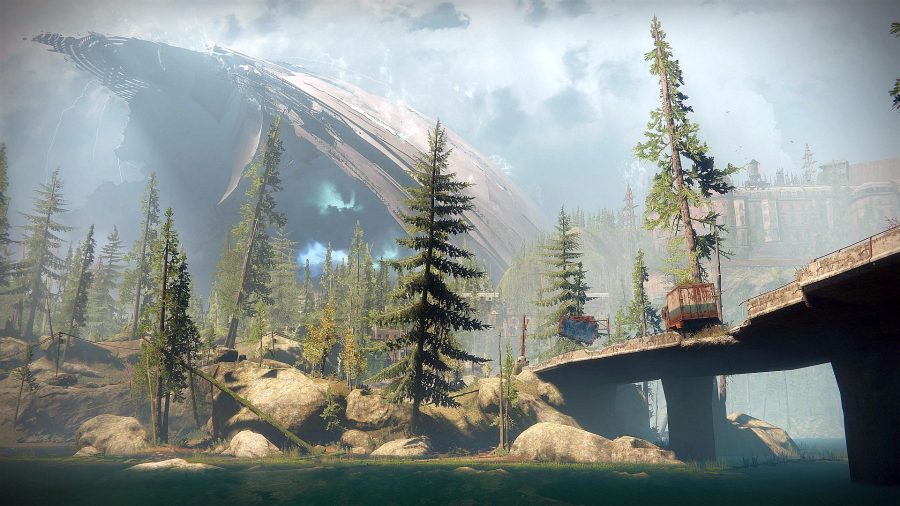November 12, 2020 We first published this piece on October 17 2017, just after Destiny 2’s launch, and enjoyed it so much that we thought we’d revisit it with the launch of Beyond Light. New planets have been added and the old text gently massaged to reflect the vaulting of some of the old ones.
Destiny 2 is bad at names. And by that I do not mean that it chose to take us to a moon called Titan and one of its classes is also called Titan, although that is unquestionably a bit thick.
Rather, I mean: why does that big dumb orb get to be called The Traveler? It mostly hangs in one place, whereas I, Guardian about the galaxy, have seen more fireteam loading screens than The Traveler has dance emotes. I’ve been everywhere, which is to say: I have been to all 11 planets in Destiny 2’s history, and now feel confident in ranking them worst to best. Carl Sagan would be proud.
No need, I think, to discuss criteria all that much. These are simply the most beautiful, atmospheric, or evocative planets in Destiny 2’s history.
Titan
It is said that a wise man builds his house upon the rocks. There are no wise men on Titan. This moon of Saturn offers only a vast methane ocean, and the structures that rest above its ginormous waves are jumped-up oil rigs. If you played Uncharted 3’s ship graveyard section and thought, ‘Gosh, I wish this would just go on forever and ever, I hope to never see a forgotten city made of gold again’, then Titan is for you. Or was, before it was vaulted.
As a set of levels, it hit its mark. Titan invited you to use your jumping abilities just as you unlocked them early in the Red War campaign – essential training, given Destiny 2’s love of platforming challenges. And there’s an appealing Quakeiness to its chitin-armoured enemies, the Hive.
But, seriously, imagine living in a place that is essentially a giant metaphor for Zavala’s personal crisis in the wake of losing the Last City. He was, to use British parlance, throwing a wobbly. Glad we didn’t humour him by staying too long, or returning too often – Titan was the least used and most-rained on of all vanilla destinations.
- Rating: 4/10 for electric-blue methane waves. Bungie pls: let me surf.
Mars
Mars was pretty good in Destiny 1. There was something charismatic about the gentle sand dunes, and tragic in the sinking cities, of Meridian Bay. But Destiny 2’s Hellas Basin is just a bit… dull.
Glacial Drift is a characterless tumble of rocks that grows a few anonymous corporate appendages as you approach Braytech Futurescape. The only really memorable bits of Hellas Basin are the super-cool Warmind labs of Alton Dynamo and Rasputin’s astonishing big black home-cube, but they’re not really what comes to mind when you think of Mars. You tend not to spend much time there.
No, you spend all your time running around those boring rocks waiting for someone to join you for Escalation Protocol ’cause you still need the shotgun. As fun as EP was at first, I’m glad it’s vaulted and I never have to go through that again.
- Rating: 5/10, one point for every time I climbed up Rasputin’s cube. Siiick.
Mercury
It’s not that Mercury was bad-looking – heck, none of these planets are really bad-looking – it’s just that, with most of Destiny 2’s planets, you see a new side of them, and a new shade of beauty, around every corner. Mercury doesn’t have any corners – it’s just a big circle.
The astonishing skybox and very, very nearby Sun absolutely have their appeal, and are more memorable in themselves than anything on Hellas Basin. Also, Mercury has sand. But, much like sand, all that fiery sunlight can feel a little oppressive after a while – a little coarse and irritating, if you will – and there’s far too little variety. Had it been bigger, it could’ve been one of the greats, but as it is we’re not missing too much with it in the vault.
- Rating: 5.5/10. Infinite forest, finite appeal.
The Moon
I really liked the Moon in Destiny 1. It was a bit like Io – tranquil, cold, and remote yet somehow not hostile. And then Bungie had to go and jazz it all up for its reintroduction in Shadowkeep.
That lovely silvery expanse in places like Archer’s Line has been torn apart and a gooey green glow is leaking from below, as if a ’90s kids TV show has set up its gunge tank in those Hive tunnels. The Fallen House of Dusk has draped its purple banners all over Anchor of Light, and of course a dirty great red castle has been plonked down north of the Hellmouth. All those old colony buildings, rather than standing empty but intact, inviting hope of future reoccupation, have been smashed to bits, adding a general air of chaos and destruction.
That’s the point, of course: the Moon is under attack by a resurgent Hive, galvanised by the Pyramid, and it’s no longer the place we knew. But it’s also definitely uglier and less peaceful.
- Rating: 6/10 for the beauty that remains.
Earth – the Cosmodrome
Maybe I just like simple colour schemes, but I quite enjoyed the Cosmodrome in the original Destiny, too. The ruddy soil beneath white snow complemented the rusting Russian rocket base and the red-suited House of Devils nicely. It’s changed with its reintroduction in Destiny 2’s latest expansion, but unlike the Moon it’s no less beautiful.
The dilapidated industrial buildings remain, but the snow has melted to reveal lush green grass and flowers. It’s lost a little of what made it distinct in comparison with the even more verdant EDZ, but on the plus side, it’d be a much better spot for a Rammstein gig.
- Rating: solid 7/10. Play Du Hast!
The Tangled Shore
Potentially a rogue call, putting this above the Cosmodrome, but gosh, I love it. Its purple lighting, debris-cluttered skybox, and bizarre topography of strung-together asteroids were unlike anything else in the game when it was introduced in Forsaken, and it has such personality – Thieves’ Landing is Destiny 2’s version of Mos Eisley, a hive (not that kind) of scum and villainy, while the barren plains of Four-Horn Gulch evoke the spirit of every Spaghetti Western.
Or at least, so Bungie would have us believe. If The Tangled Shore is guilty of anything, it’s of not fully realising its potential – sadly, my deal-gone-wrong after meeting a sketchy Fallen pirate in the Empty Tank lives only in my imagination. But now we’re criticising a vibrant setting for Destiny’s limitations as a game, and that’s not fair.
- Rating: an even more solid 7/10. You don’t want to sell me death sticks.
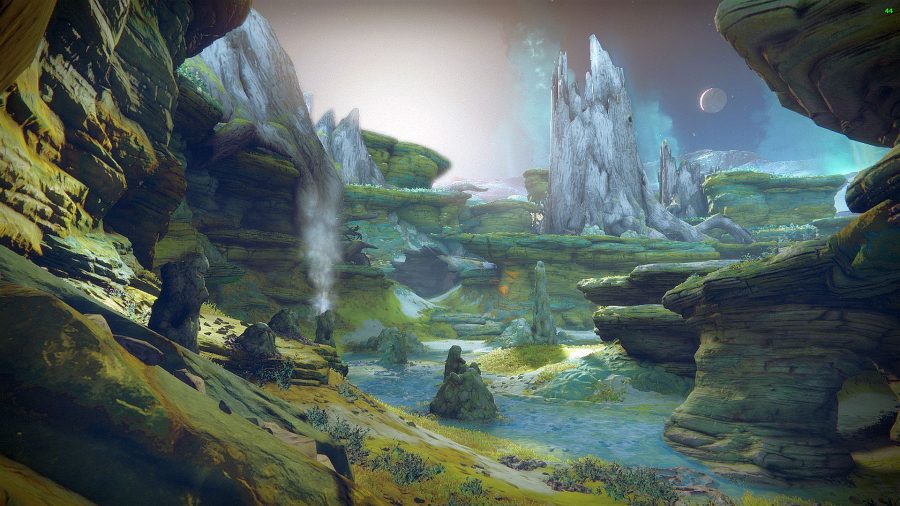 Image credit: u/imdaylightstars on Reddit
Image credit: u/imdaylightstars on Reddit
Io
Io is good. Or was, before it was sadly vaulted. If anyone tries to tell you Io was not good, they are either lying or deluded that mustard yellows, acid greens, and big alien skeletons can never be anything other than ugly.
Nope, this place is definitely pleasant to look at. Its plumes of steam are vaguely reminiscent of Iceland, only with the aurora borealis transplanted from the sky to the ground. Think of it that way.
Io is quiet, too. You would think its sanctity in the eyes of warlocks – rooted in the fact that this is the last place the Traveler touched before The Collapse – would make this moon a tourism hotspot. A kind of craggy Mecca. But if you can stomach the Taken, you can pretty much pick your plot here. Even Ikora, who initially makes a big song and dance about refusing to leave, changes her mind within the space of a mission.
Perhaps she does so because Io’s most intriguing location – a sort of shattered glacier visible from the moment you touch down on its surface – is merely part of the background.
- Rating: 7.5/10. Good geysers.
Europa
Now we’re talking. Destiny 2’s newest planet is also in some ways one of its oldest, as concept art for Europa existed before Destiny 1 launched. With its futuristic skyscrapers raked by horizontal icicles and Jupiter huge in the sky, Bungie has nailed that art, and, in Europa’s driving snowstorms, inky blue skybox, and glimmering ice, given us a location unlike anything we’ve yet seen.
If I had a criticism, it’s that the surface is a little one-note – it’s beautiful, yes, but it needs some variety. Thank goodness for the Vex, then whose, Escher-esque constructions and milky waterfalls offer much more than humanity’s drab prefabs on the aesthetic front. Fortunately we raise our game beneath the surface, where the clean white panels of Braytech Exoscience, tastefully accented with pastel shades of green and orange, put me in mind of a Portal testing chamber. Lovely.
It’s also worth noting that the Beyond Light campaign excels in capturing Europa’s best side. The music stops just as the Darkness’s menacing pyramids hove into view, framed in the air above distant mesas and between shoulders of ice. It’s like something out of 2001: A Space Odyssey and utterly mesmerising.
- Rating: 8.5/10. Icy moon has just a bit too much ice.
The Dreaming City
Space Rivendell, home of the space elves was a wonderful treat when it arrived in Forsaken. Bungie had showed very little of it, and my breath caught in my throat when I first arrived to see the Oracle tower rising from the canyons and mists, framed against possibly the best skybox in the game.
There’s not a lot else to say about the Dreaming City. It’s a truly beautiful place – all gently curving alabaster domes and towers set with jade stone and flagged with amethyst. It might be a bit too obviously, stereotypically pretty – it has no edge, no imperfections. Apart from that curse that covers the place in black sludge every three weeks, I suppose.
- Rating: 9/10. Needs either less or more sludge, I’m not sure.
Nessus
Yeah, Nessus shares some of the palette of No Man’s Sky. The foliage is red and the air is turquoise, or emerald if you want to be poetic about it. We all noticed, so let us just take a second to get it out of our systems. Cheers.
There is something unique going on here, after all. The loveliness of Nessus is derived particularly from its verdant, autumnal networks of tree branches, which weave strangely into the angular stonework cut by the Vex. In fact, the Vex seem to have treated the planet like an overlarge rockery, or the raw materials for a massive Rubik’s Cube. A lot of Nessus is consequently left looking like Deep Thought as depicted in the Hitchhiker’s Guide to the Galaxy film, and that is no bad thing.
The best bit of Nessus is probably the point where the cubes give way to thin air, and a waterfall cascades off the edge of what looks like a massive motherboard. Or should that be ‘cascaydes’? Right? Wrong. Sorry. You were right not to laugh.
- Rating: Nessus gets a 9/10 for having an area called the Cistern and still managing not to be toilet.
Earth – the EDZ
I know, I know: we already live on Earth. You might feel some small disappointment in searching the Solar System for loot, only to decide that Earth is the best place in it. But the EDZ is a site of astonishing, layered beauty.
If Nessus is about the juxtaposition of technology and nature, the EDZ sees nature taking back its rightful place after technology has left the building. There’s something of Half-Life 2 art director Viktor Antonov’s trademark vibe to Bungie’s abandoned mid-Europe (the EDZ, according to some convincing detective work on Bungie’s forums, is where Germany, Austria, and Switzerland meet). A sense of calm despite the endless Fallen encounters. And, everywhere, the shard of the Traveler looms majestically. It’s a reminder of what Bungie do best: bring a touch of magic to science fiction.
The EDZ looks like not only somewhere you could bear to live, but somewhere that has already been lived in. And it is for that reason that we’re going to park our Destiny 2 characters in rusty shipping containers somewhere in the Outskirts when we’re finally ready to put the game down, whenever that distant day may be.
- Rating: 10/10, and a lesson for humanity (and for Dead Orbit): stay at home. It simply does not get better than Earth.
Original text by Jeremy Peel. Updated by Richard Scott-Jones.
